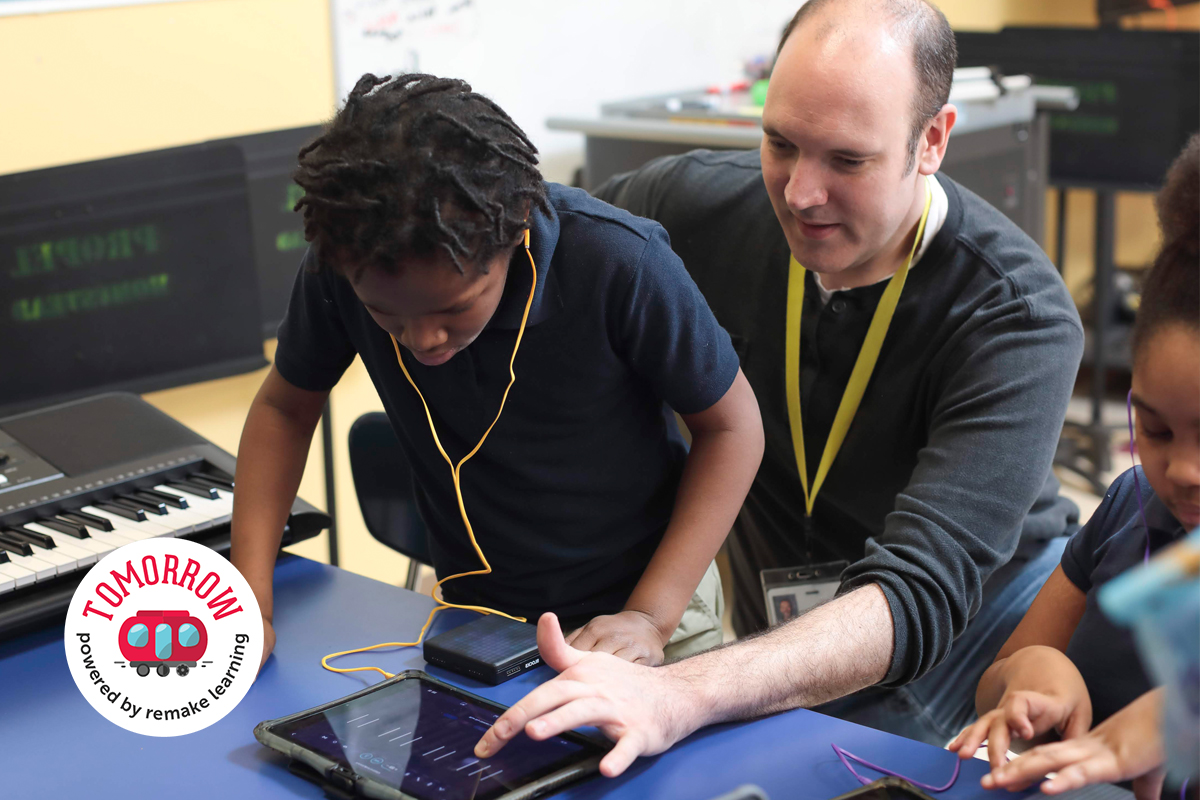
How the Fred Method from Mister Rogers can help forge the future of learning
By Melissa Rayworth
When a crisis prompts people to seek comfort, the words of Mister Rogers are often the first to appear. “Look for the helpers,” people post, using Rogers’ well-known quote to reassure one another on social media.
“Often when you think you’re at the end of something, you’re at the beginning of something else,” Fred Rogers memorably said – words that offer hope even on the hardest days.
Though it’s nearly two decades since new episodes of his show aired, generations of adults instinctively look to their memories of Mister Rogers for a needed dose of love and life-affirming kindness when life feels chaotic.
But what these millions of people might not know is that while his work is synonymous with kindness and patient encouragement, Fred Rogers was also a groundbreaking disrupter. He conceived and created “Mister Rogers’ Neighborhood” in close collaboration with learning scientists, digging into child development research as he created his beloved make-believe world.
And while broadcast television may seem old-fashioned today, Mister Rogers was leveraging the new technology of his day in innovative ways. We see his Neighborhood now as a beloved staple of a Gen-X childhood. But at the time, people questioned whether television could be used to teach children anything.
Rogers believed that technology could be used to forge meaningful, loving personal connections. In the 1960s and even today, plenty of people don’t see how that’s possible. Doesn’t cutting-edge technology threaten to replace human interaction? How could it be used to make personal connections, especially with young kids?
Despite that criticism and doubt, Rogers pushed forward. He knew that we can fuel wonder and joy, and thus learning, in all kinds of ways. And he sought out the scientific data that would help him do it as impactfully as possible.
“He was an innovator,” says Grable Foundation director Gregg Behr, founder of the Remake Learning Network and co-author of the new book “When You Wonder, You’re Learning: Mister Rogers’ Enduring Lessons for Raising Creative, Curious, Caring Kids.”
“Yes, he was attentive to kids and loved kids, and he demonstrated that,” Behr says, “but he was also using the technology of his day.”
And so, we ask: What can we learn from the warm, kindly Mister Rogers we remember and from the disruptive innovator named Fred Rogers who used technology and science in groundbreaking ways?
Educators in the Pittsburgh region have begun exploring this question using an approach that can be described as “the Fred Method” — finding ways to balance disruptive innovation with equal doses of humanity, wonder, and joy.
Ryan Rydzewski, Behr’s co-writer of “When You Wonder, You’re Learning,” is a former teacher. He remembers well that as a teacher, “you have a million things to deal with at any given moment. It’s not always easy to make space for what kids are interested in or what kids think is joyful,” he says.
As he researched Rogers’ work while co-writing the book, he discovered one key to the Fred Method in one of Rogers’ favorite sayings, which comes from the Quaker tradition: “Attitudes are caught, not taught.”
“Whether you’re a classroom teacher or in an afterschool space or you’re a caregiver at home,” Rydzewski says, “any educator can have that lifelong love of learning that can be infectious around kids. You can bring your own passions into whatever learning spaces you work in. Let kids see what gets you excited. And even if the same thing doesn’t light them up, it can help them see that there’s something out there for them.”
Beyond a teacher’s own reconnection with joy and wonder, Rydzewski and Behr found many other ideas for incorporating the Fred Method as they researched their book. One idea came via Hedda Sharapan, a Pittsburgh-area teacher and consultant for Fred Rogers Productions.
“Once, I saw a teacher who had in her classroom something called an ‘Ask It Basket,'” Sharapan explained. “When the children would ask a question, she would write it down and say, “That’s a great one to put in the Ask It Basket.’”
Without interrupting the day’s lessons or derailing anything the teacher needs to get done, this simple choice tells children that their thoughts and questions matter.
“That is so emblematic of the Fred Method — a kid asking that question, and an adult not rushing to answer it, not thinking they need to know the answer,” Behr says, “and maybe even acknowledging they don’t know the answer.”
Fred Rogers’ widow Joanne, who passed away shortly before the book was published, wrote a moving introduction to “When You Wonder, You’re Learning.” In it, she explained that “Fred Rogers wasn’t a saint,” Behr says, but he did take the time to really understand children. He put himself in their shoes each day as he approached the work of teaching them.
It’s something we all can do. As we teach and parent, and as communities map out a learning landscape that can benefit all children, Behr says, “Fred Rogers’ blueprints are entirely accessible to each of us.”
We can take the time to really understand what is now called whole child development theory and we can find ways to help teachers to connect that in their practice with what is innovative, future-facing and appealing to kids.
“That’s the formula of the Fred Method,” Behr says. “Timeless and classic, and future-facing and innovative.”
This article is part of a series for “Tomorrow” powered by Remake Learning. “Tomorrow” will explore – through virtual events, grantmaking, and storytelling – what we can do today to make tomorrow a more promising place for all learners. Follow along or share your hopes for today’s young people using the hashtag #RemakeTomorrow and tagging @RemakeLearning. Learn more about Remake Learning here. And read more “Tomorrow” articles published on Kidsburgh.